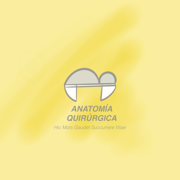Extremidad Inferior
ANTERIOR FEMORAL REGIONS (INCLUDING THE INGUINOFEMORAL REGION) AND PATELLA.
9.1 Skin incision.
To lift up the skin, the incisions will follow the recommended lines as shown in figure 9.1.
Inguinofemoral and anterior regions:
Line aa´: oblique line which goes from the anterior and superior iliac spine to the pubis
Line bb´: horizontal line which is 2cms above of the base of the patella
Line cc´: vertical line which joins the previous two following the thigh muscle.
Patella Region:
Line bb´: horizontal line, which goes 2cms above the base of the patella.
Line dd´: horizontal line, which goes through the tibial tuberosity.
9.2 First Plain. Subcutaneous cellular tissue or superficial fascia (figure 9.2).
After cleaning the abundant fat zone, we will isolate the superficial vasculonervous elements.
Vascular elements.- We visualise the saphenous internal vein (1) carrying the collaterals of the anterior and internal face of the thigh, as well as the pudendic and abdominal region. Near to the inguinal ligament the superficial fascia is perforated to meat up with the femoral vein. The inguinal superficial ganglion are settled with in the area of the arch of the internal saphenus vein which in this preparation haven’t been conserved.
Nervous elements. The cutaneous lateral nerve of the thigh (2) has been dissected, collateral lumbar branch of the lumbar plexus and the cutaneous intermediate nerves (3) and medial (4) of the thigh, which are branches of the femoral nerve.
9.3 Second plain. Infra aponeurotic region (figure 9.3).
In this preparation we have removed the superficial fascia, as well as part of the femoral fascia which surrounds the vascular femoral package.
We find two triangular anatomical regions: femoral triangle, superior base, and the triangle of the quadriceps, inferior base.
The femoral triangle (scarpa) is dissected by starting to isolate the long adductor muscle (1), medial boundary of the triangle, continuing with the sartorius muscle(2), lateral boundary of the triangle; the are of the triangle is occupied by the iliopsoas muscle (3) and pectinius muscle(4). The bisector of the femoral triangle crossed from lateral to medial by the nerve (5), artery (6) and femoral vein (7)
Between the sartorius muscle, medial and the tensor of the fascia lata, laterally, we localise the triangle of the quadriceps, in which we are able to identify the three origin heads of the quadriceps muscle, from lateral to medial these are, lateral vast, (8). Femoral rectus (9) and medial vast(10). The intermediate vast lies deeper.
9.4 Third Plain (figure 9.4)
In this preparation we have cut 2cms underneath the inguinal ligament, the sartorius muscle (1) and the rectus femoris muscle (2). To be able to recline these two muscles, we must previously find the muscular branches of the femoral nerve which are for the sartorius muscle and the intermedial and medial cutaneous nerves, which will cut.
After this manoeuvre, we may isolate the following vasculonervous elements:
Vascular elements. - Of the posterior lateral face of the femoral artery (3) we may see the deep femoral artery (4), which introduces it self in-between, the pectinius muscle and the long adductor muscle. This is artery of the circumflex medial and lateral femoral branches (5) as well as numerous muscular branches.
Nervous elements. - Muscular branches of the femoral nerve for the quadriceps muscle (6) the saphenous nerve and its accessory (7), which are left visible after removing the sartorius muscle.
9.5 Fourth plain
In this preparation we have cut, 2cms from the origin of the isquiopubian branch, reclined, the adductor longus muscle (1). Underneath this muscle we will find the anterior branch of the obturator nerve (2), dividing it self in small branches for the long and short adductor muscle (3), gracilis (4) and in some occasions the pectinius (5) (Figure 9.5).
To dissect the posterior branch of the obturator nerve (1) we cut 2 cms away from the origin of the short adductor muscle (2), reclining it to be able to clean the muscular branches which are for the pectinius muscles (3) (in some occasion we must also cut them if their disposition doesn’t allow us to continue working), mayor adductor (4), and also in some occasions for the short adductor (figure 9.6



